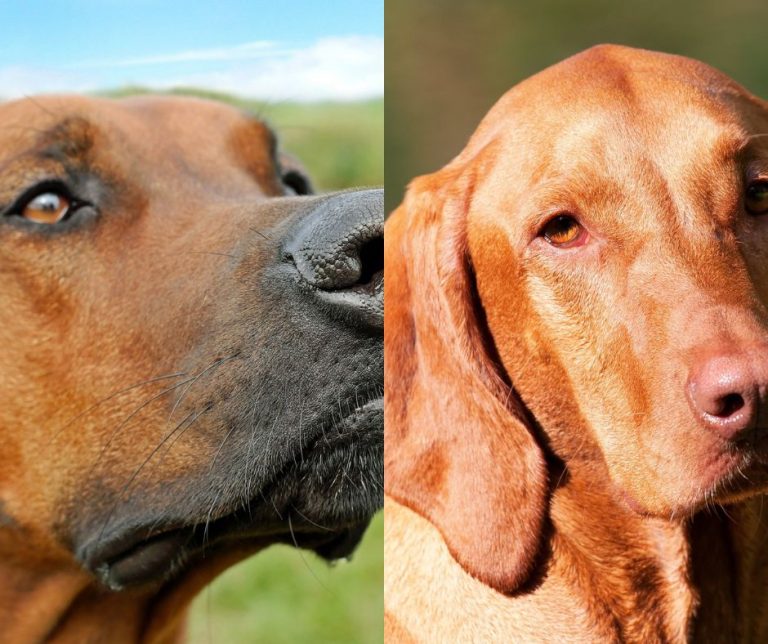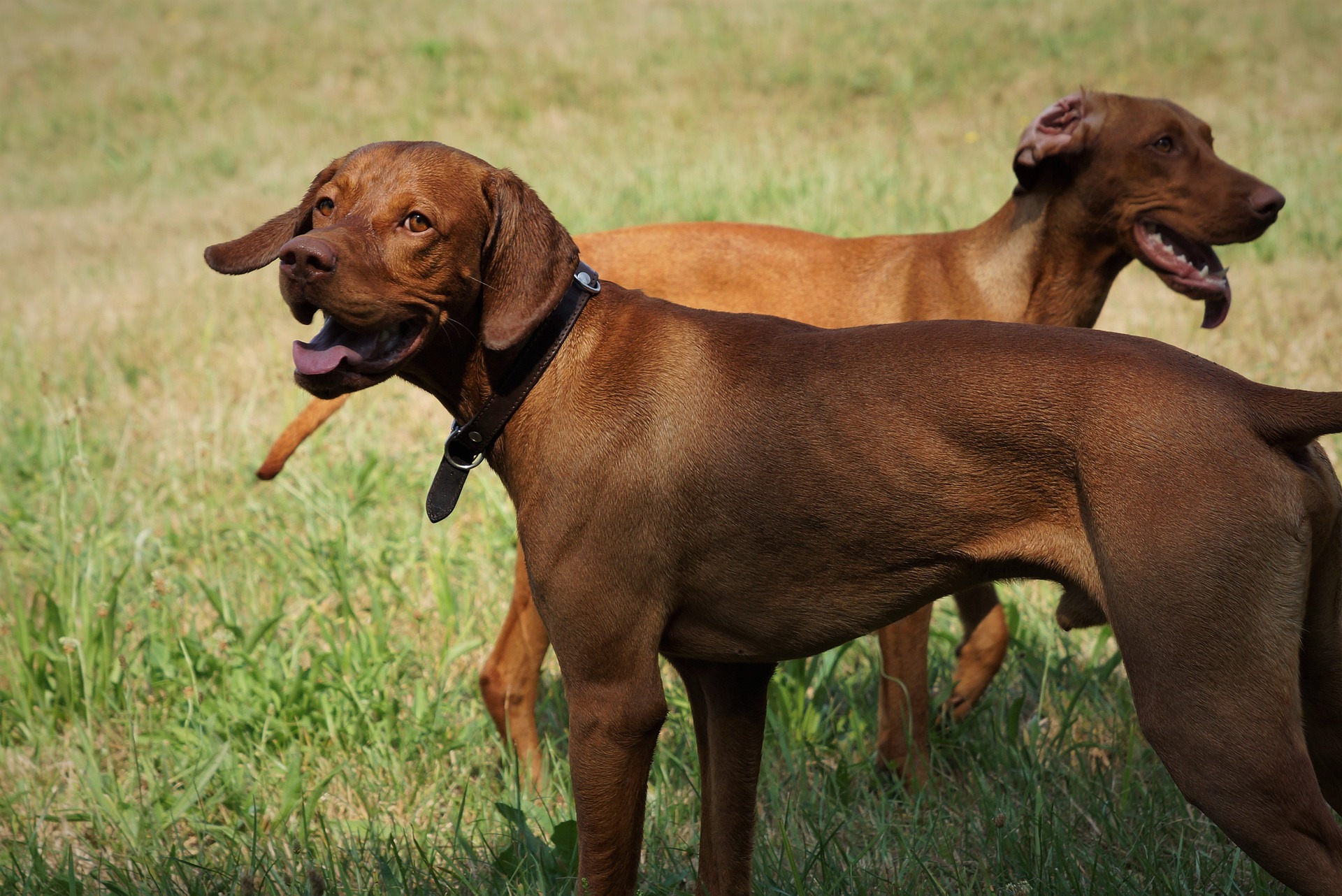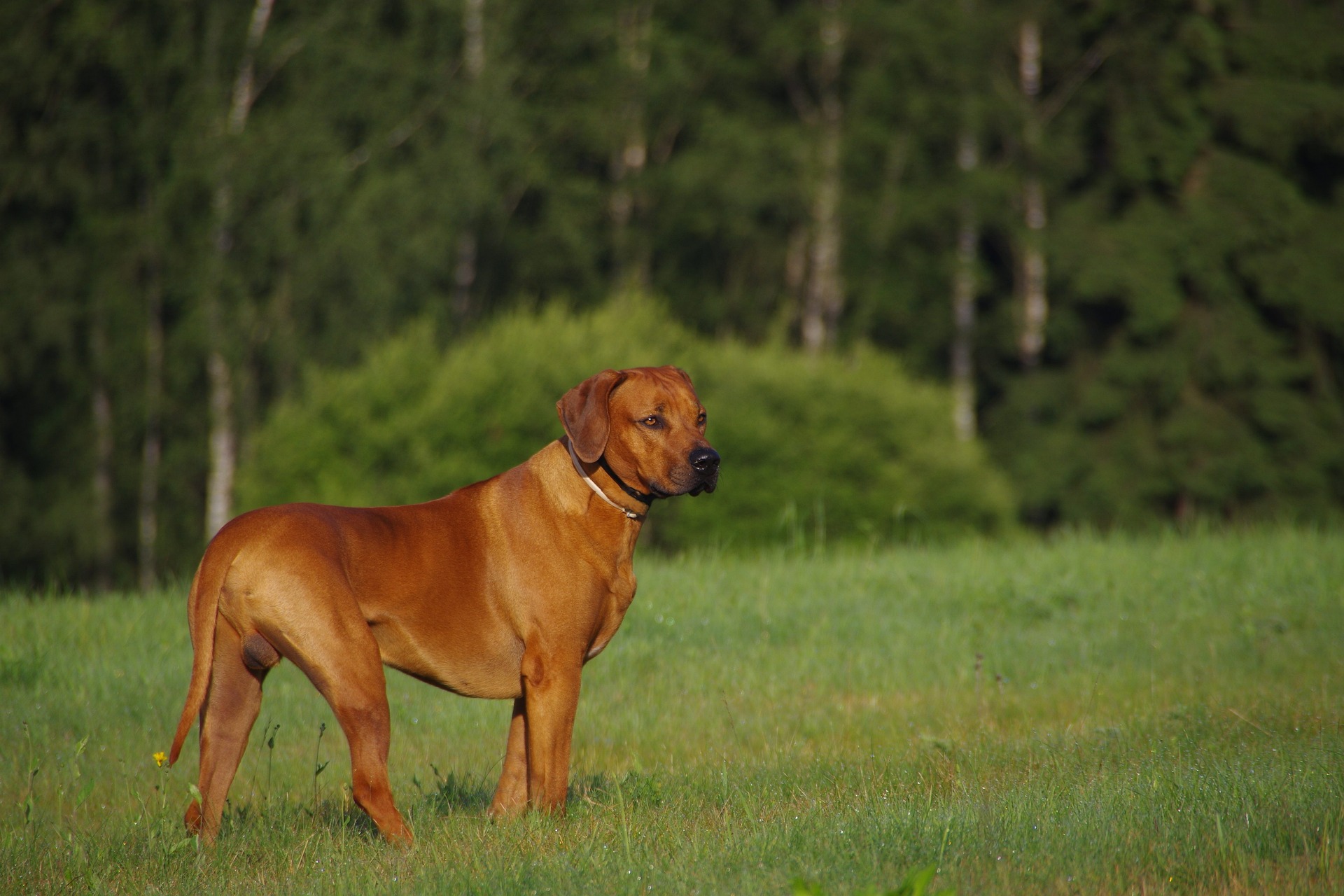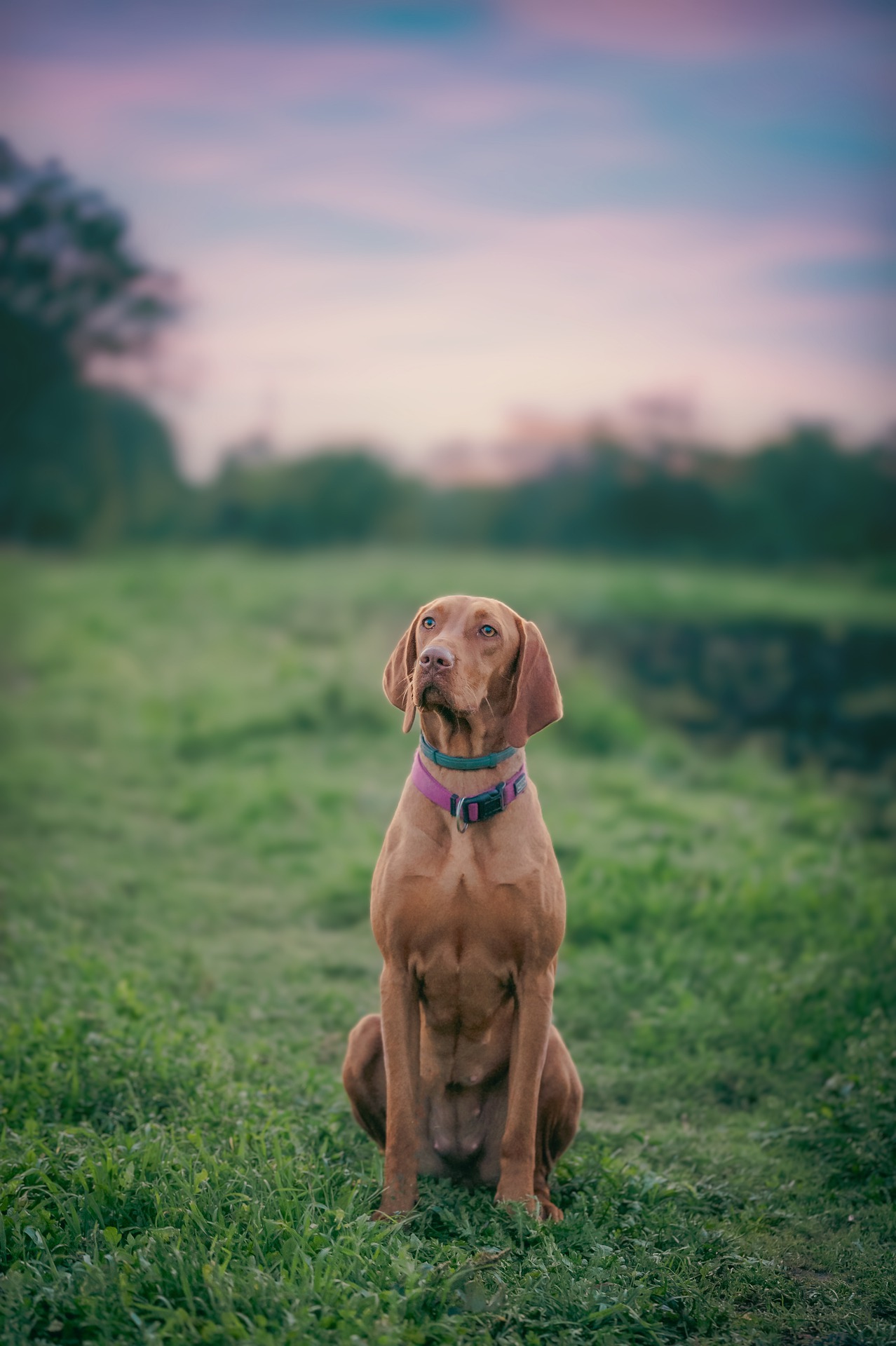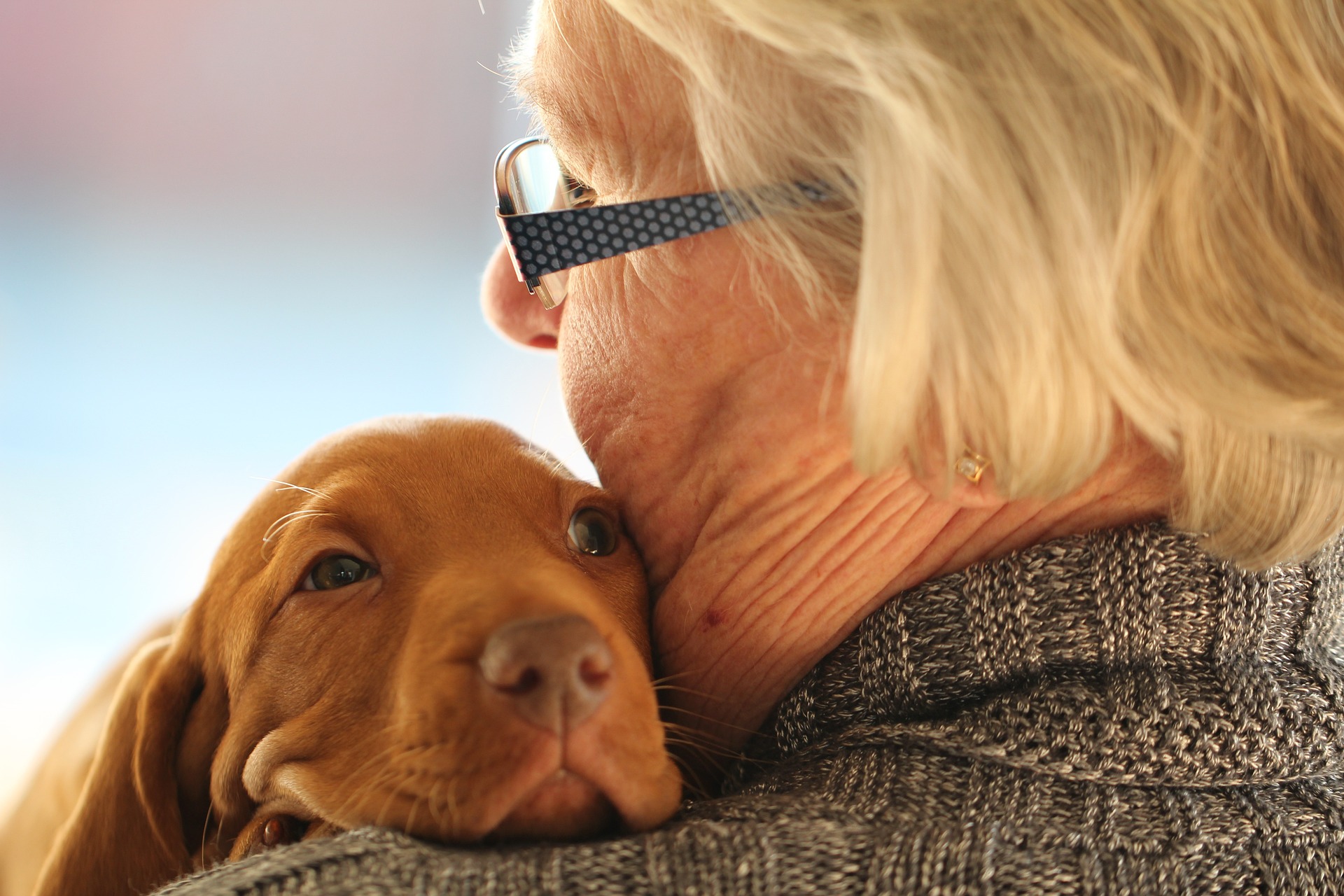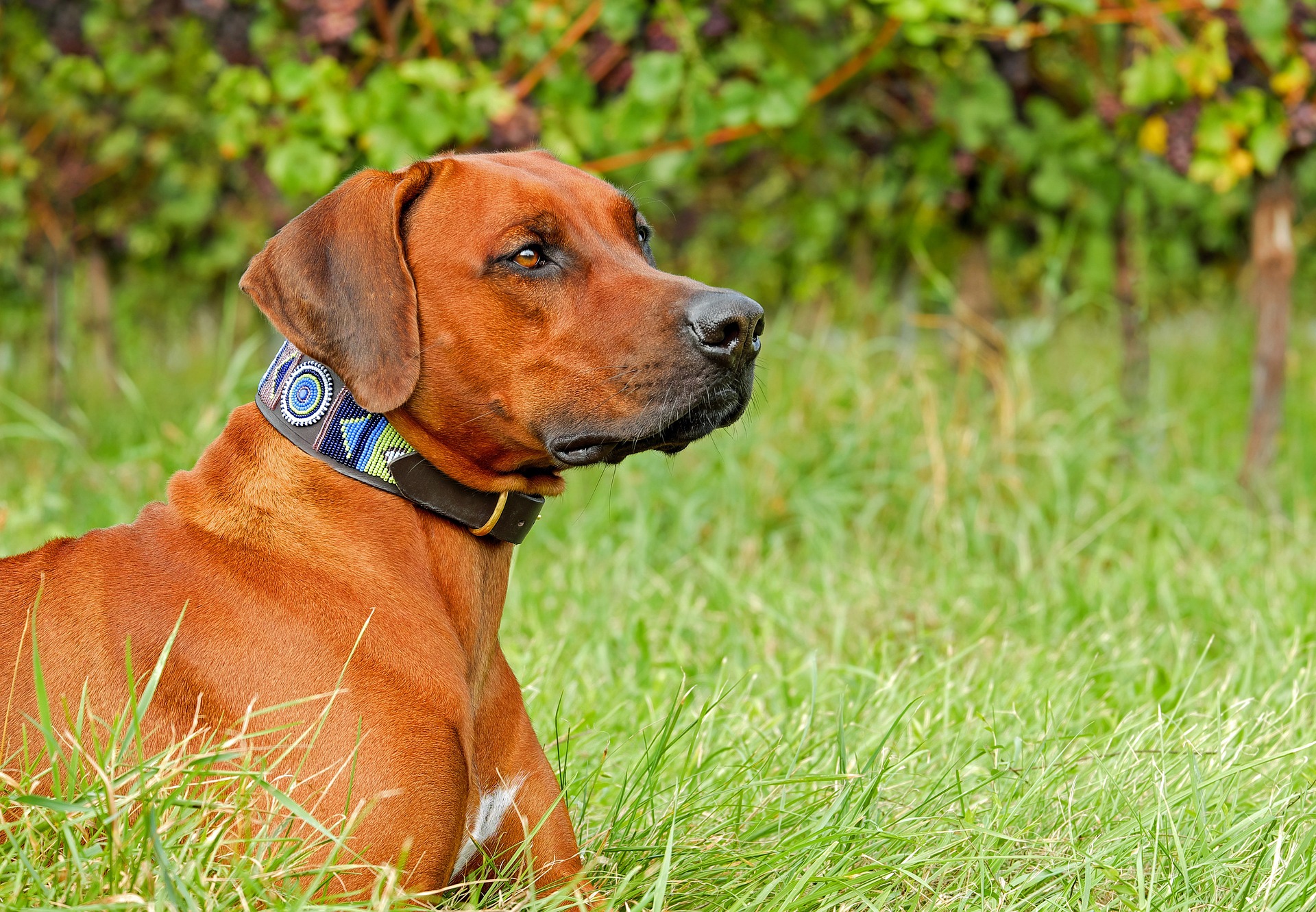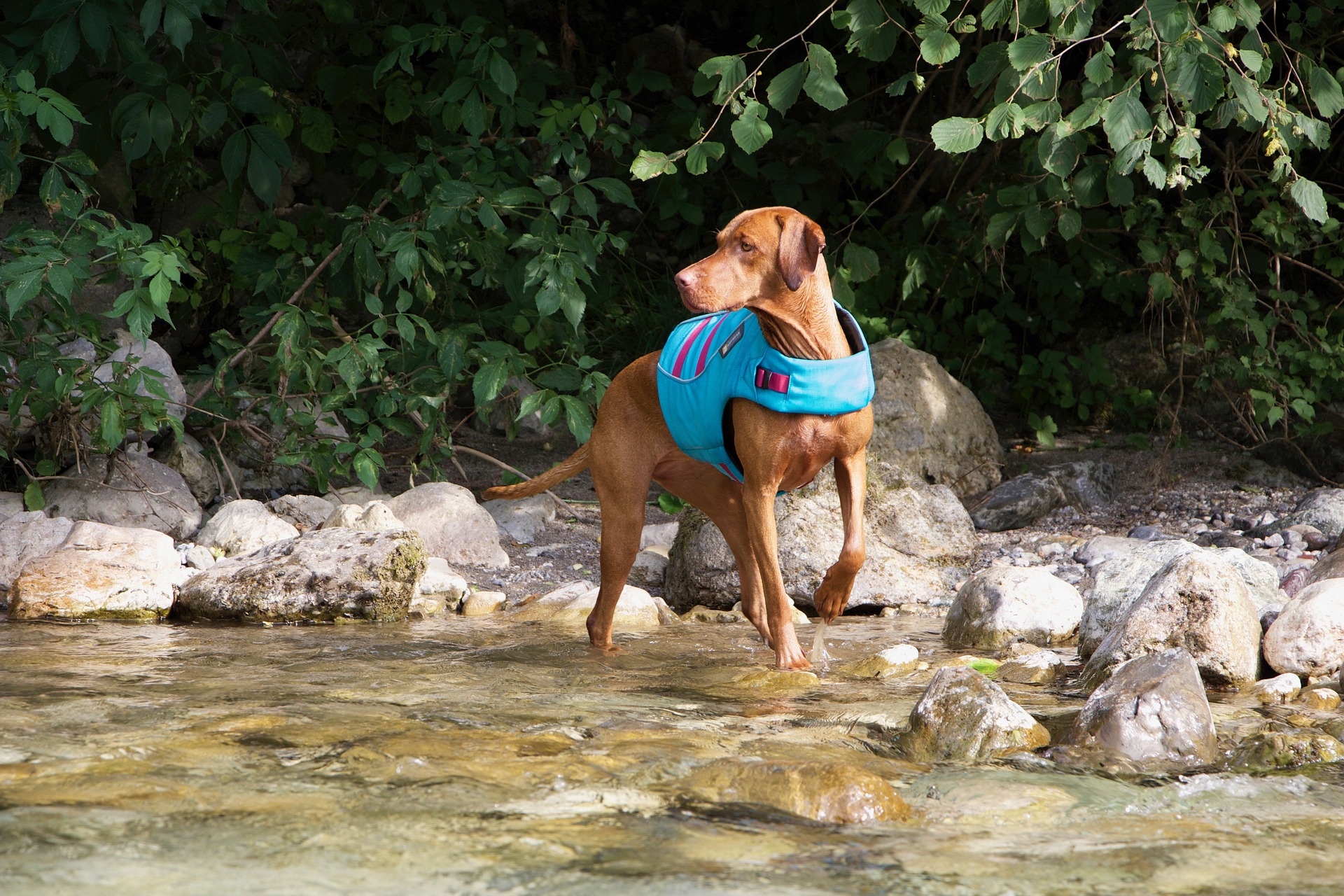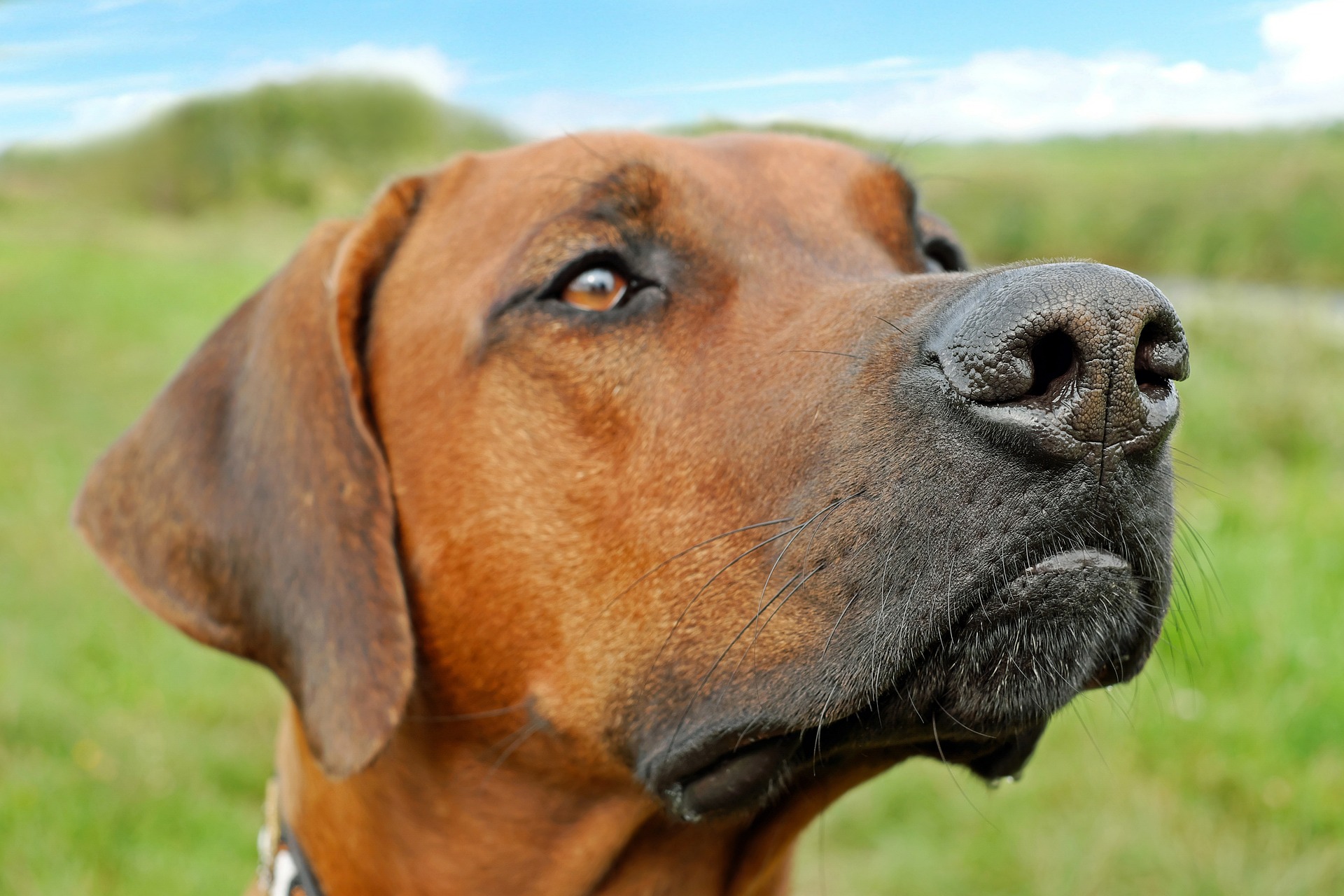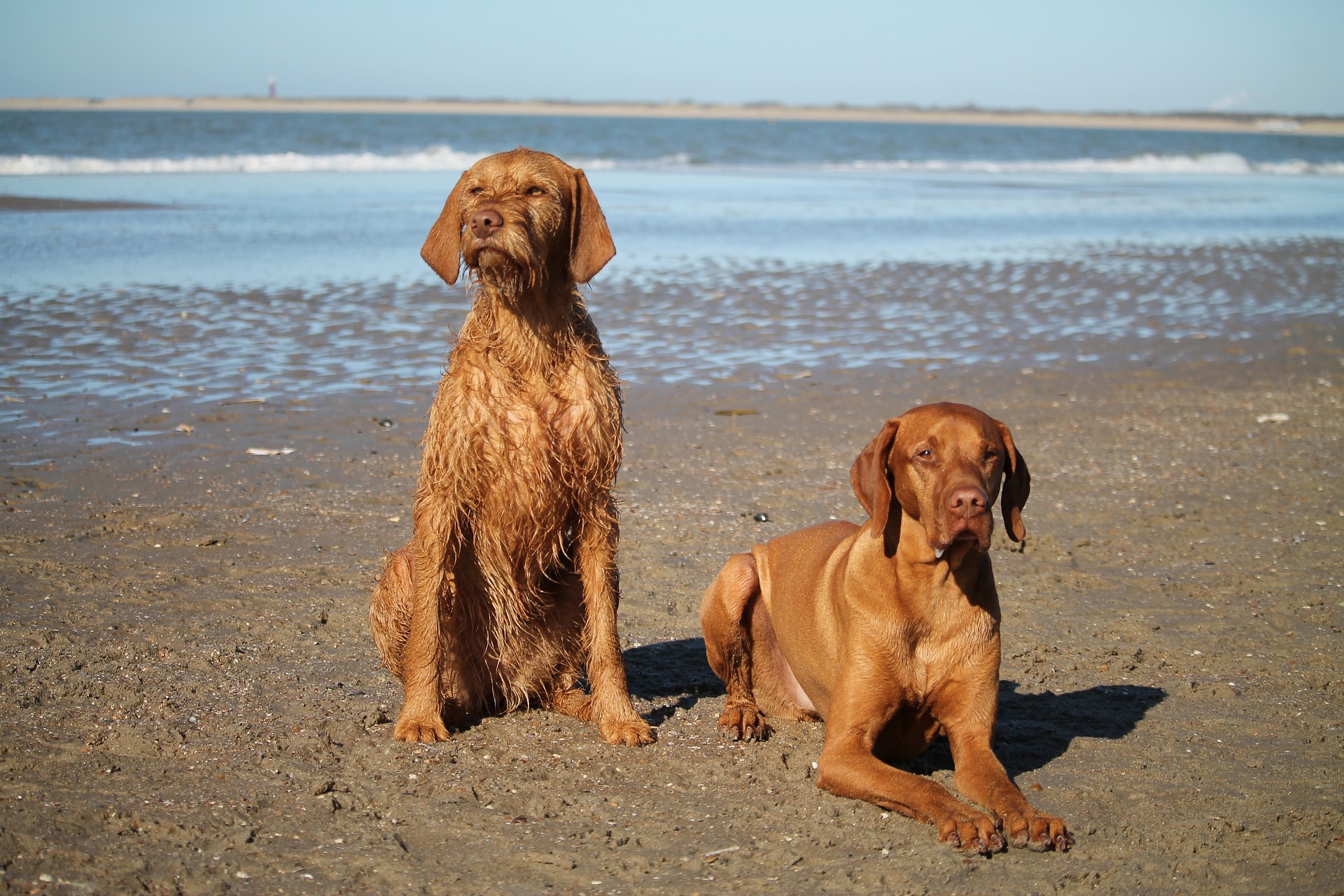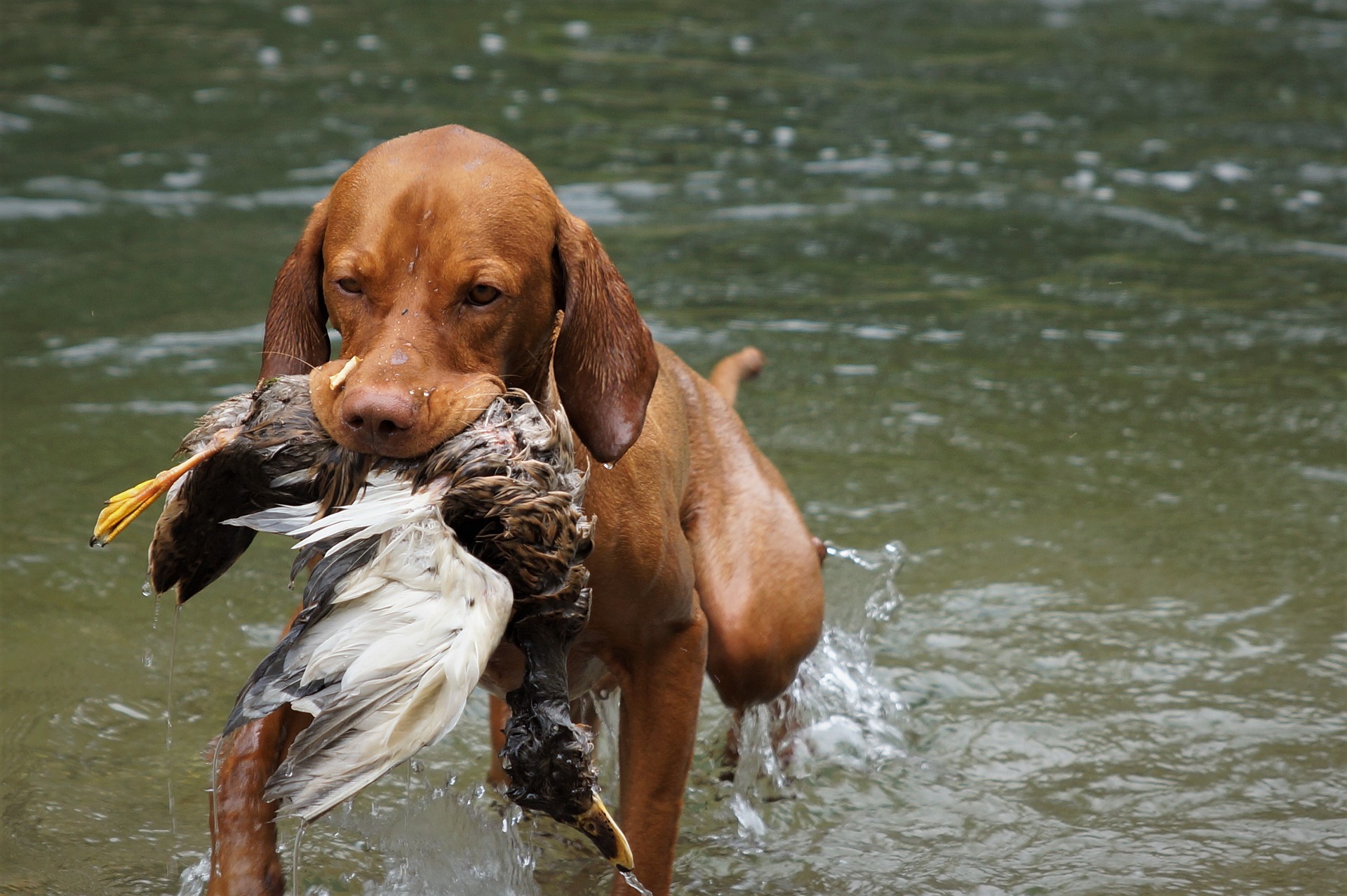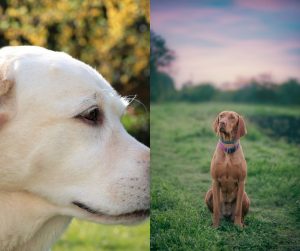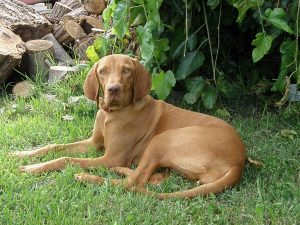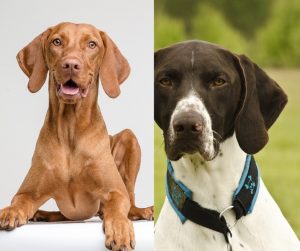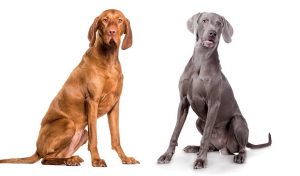When considering an addition to the family in the form of a furry friend, it’s important to understand the choices at hand.
Two breeds that often capture the hearts of dog lovers are the Rhodesian Ridgeback and the Vizsla. These breeds share some similarities, yet they possess unique traits that set them apart.
The Rhodesian Ridgeback, known for the characteristic ridge of hair along its back, is larger and typically more robust than the graceful Vizsla, which is admired for its sleek, golden-rust coat.
With their warm and affectionate nature, Vizslas have cemented their place in the homes of many as loyal and loving companions, suitable for those who may be first-time dog owners.
On the other hand, the Rhodesian Ridgeback’s independent and sometimes wilful temperament requires a more experienced hand, but they too offer deep loyalty and protection to their families.
Both hunting dog breeds have their origins steeped in history with the Vizsla hailing from Hungary while the Rhodesian Ridgeback traces back to South Africa. Each has evolved with a unique set of skills and attributes that cater to different lifestyles and preferences.
Let’s take a deeper look into the Rhodesian Ridgeback vs Vizsla dog breed comparison. They are both part of the hound group.
Key Takeaways
- The Vizsla is approachable and well-suited for first-time owners
- Rhodesian Ridgebacks require experienced handling due to their independent nature
- Both breeds are loyal and can integrate well into family life
Breed Origins and History
When exploring the roots of the Rhodesian Ridgeback and the Vizsla, one travels through two different continents, uncovering the story of two breeds shaped by their environments and human companions.
Rhodesian Ridgeback Origins
Originating from southern Africa, the Rhodesian Ridgeback was named after the distinctive “ridge” along its back, a line of hair running in the opposite direction to the rest of its coat.
Initially bred by European settlers and the Khoikhoi people, they used semi-domesticated ridgebacked dogs that could fend off wildlife threats.
This breed, often referred to as the African Lion Hound, boasts a history intertwined with big game hunting, especially for lions, earning them a reputation for bravery and tenacity.
Vizsla Origins
Trailing back to Hungary, the Vizsla stands as a symbol of aristocratic heritage and sporting prowess.
With illustrations of Vizsla-like dogs dating back to the 10th century, these canines have a storied past as companions in hunting fowl and game in the vast Hungarian plains.
Bred for speed, agility, and a sharp nose, Vizslas are adored for their dual role as both esteemed hunters and affectionate family members. Vizsla dogs are very similar to the Weimaraner dog breed. They are among the best hunting breeds, alongside dogs like the German Shorthaired Pointer.
Physical Characteristics and Appearance
Diving into the world of dogs, especially breeds like the Rhodesian Ridgeback and the Vizsla, is a treat for those who appreciate the diversity in our canine companions. Both breeds boast unique features that cater to different lifestyles and preferences.
Rhodesian Ridgeback Features
The Rhodesian Ridgeback is recognized for its distinct ridge of hair that runs in the opposite direction to the rest of the coat, along the spine. Here are some specific details describing its appearance:
- Size: They stand at an impressive 24 to 27 inches at the shoulder
- Weight: A healthy Ridgeback typically weighs between 70 to 85 pounds
- Appearance: This breed has a muscular, athletic build that displays power and agility
- Color: The coat comes in various shades of wheaten, providing a warm, earthy look
- Coat: A characteristic short, dense coat is designed to withstand harsh climates
Vizsla Features
Moving on to the Vizsla, this breed is known for its sleek physique and gentle expression. The Vizsla’s most notable attributes include:
- Size: They measure a bit smaller at 21 to 24 inches tall at the shoulder
- Weight: These dogs usually weigh in at a lighter 45 to 65 pounds
- Appearance: A Vizsla sports a lean, muscular build with defined lines and a noble stance
- Color: A signature red coat makes the Vizsla stand out. It’s a smooth, inviting color that shines in the sun
- Coat: They have a short coat which lies close to the body, highlighting the dog’s athletic form
As we observe these breeds, any dog lover or potential owner can appreciate the striking contrasts and appealing attributes that Rhodesian Ridgebacks and Vizslas carry. Whether it’s the Ridgeback’s stoic demeanor or the Vizsla’s warm tone, these dogs have characteristics that can win hearts in an instant.
Temperament and Personality
Choosing between a Rhodesian Ridgeback and a Hungarian Vizsla isn’t just about looks; their personalities are as distinct as their origins.
The former hails from Africa as a robust hunting dog, with a streak of independence, while the latter, from Hungary, is historically a skilled pointer and retriever, bred for companionship as much as for work.
Here’s a glimpse into each breed’s temperament.
Rhodesian Ridgeback Temperament
The Rhodesian Ridgeback is a picture of dignity and intelligence. Known for an independent streak, they may not always seek cuddles but don’t mistake this for a lack of affection.
These dogs are deeply loyal and form strong bonds with their families. They step up as guard dogs, being naturally protective without undue aggression.
However, that protective instinct means they can be aloof with strangers, sizing up anyone new to the scene with a careful eye.
Vizsla Temperament
On the other hand, Vizslas are the epitome of a loving nature. Often called “Velcro dogs,” they stick to their humans, thriving on affection and being involved in family activities.
Vizslas are sensitive souls who display their loyalty in constant nudges for attention and pets.
Their friendly, outgoing demeanor makes them great for families, and while they will be protective if the situation calls for it, they are generally open-hearted with new faces. This Velcro dog will be a loving companion to your family.
Exercise and Energy Levels
When picking between a Rhodesian Ridgeback vs Vizsla, it’s important to understand that they both bring a good deal of energy to the table, with slightly different exercise needs.
Let’s take a closer look at what this means in terms of daily activity and companionship for potential pet owners.
Rhodesian Ridgeback Energy
The Rhodesian Ridgeback, with his muscular frame and athletic build, has a strong need for daily physical activity. He thrives when given tasks that engage both his body and mind.
Regular exercise is crucial for this breed to prevent boredom and maintain his mental health.
While he will certainly enjoy a leisurely walk, this dog’s endurance means he often makes for an excellent running or hiking partner.
One should not underestimate the value of mental stimulation for the Ridgeback – interactive play sessions and challenging games should be part of his routine.
Vizsla Energy
On the flip side, the Vizsla’s energy level is quite high, perhaps even more so than the Ridgeback. She’s often described as a bundle of energy wrapped in a sleek, russet-colored coat.
Daily vigorous exercise isn’t just a preference for a Vizsla; it’s a necessity.
Whether it’s a game of fetch, a run in the park, or competing in canine sports, she needs to expend her energy positively.
The Vizsla not only requires physical activity but is also eager for activities that provide mental stimulation to satisfy her intelligent and curious nature. Without it, she may find less desirable ways to entertain herself.
She’s a keen and nimble companion, especially for those who live an active lifestyle.
Training and Socialization
When it comes to raising a well-behaved and happy dog, proper dog training and socialization are key. Whether one opts for the Vizsla or the Rhodesian Ridgeback, each breed requires a tailored approach to reach its full potential.
Training Techniques
The Vizsla is known for its eagerness to please and ability to learn quickly, which makes them ideal for first-time dog owners.
Dog training techniques that work best with Vizslas involve positive reinforcement—rewarding them for good behavior with treats, praise, or playtime.
This reinforces their desire to follow commands and strengthens the bond between dog and owner. Starting from an early age is vital, establishing consistency and routine to help them understand what is expected.
Rhodesian Ridgebacks, on the other hand, are a bit more of a challenge due to their stubborn streak.
Owners need to establish themselves as the pack leader with a firm but caring hand.
The key is consistency in commands and expectations, paired with positive reinforcement.
Because of their intelligence and independence, Ridgebacks may attempt to assert dominance, which calls for a more experienced hand in training.
Importance of Socialization
Early socialization plays a significant role in a dog’s life, especially for these two breeds.
Introducing a Vizsla to a variety of people, pets, and environments from a young age can help them develop into a well-rounded adult.
They’re naturally affectionate and can get along well with children and other dogs if introduced properly.
Socialization teaches them to be adaptable and friendly, reducing the chances of anxious or aggressive behavior later on.
Rhodesian Ridgebacks, historically bred to hunt large game, may have an instinctive prey drive.
Therefore, socializing them early is crucial to ensure they learn to interact peacefully with other animals.
They too can be great family pets, protective yet loving, if socialized correctly.
Because of their protective nature, they must learn to distinguish between normal situations and actual threats, which requires patient and consistent socialization efforts by their owner.
Health and Lifespan
When considering a pet, it’s smart to weigh the health concerns and potential lifespan that come with different breeds.
Both Rhodesian Ridgebacks and Vizslas come with their pack of common health issues, but they also boast decently lengthy lifespans for dogs of their size. Let’s take a look at the Rhodesian Ridgeback vs Vizsla health comparison.
Common Health Issues
Both the Rhodesian Ridgeback and the Vizsla, like all breeds, may face specific health challenges during their lives. Not every dog will get any or all of these diseases, but it’s important to be aware of them if you’re considering either breed.
- Hip Dysplasia
- Elbow Dysplasia
- Dermoid Sinus (specific to Rhodesian Ridgebacks)
- Hypothyroidism
- Bloat
- Progressive Retinal Atrophy
- Epilepsy
Rhodesian Ridgeback Health
Rhodesian Ridgebacks are sturdy dogs that typically enjoy a lifespan of 10 to 14 years. Here are some specific health concerns for this breed:
- Hip Dysplasia: A genetic condition causing abnormal hip joint development
- Elbow Dysplasia: Similar to hip dysplasia, but affecting the elbows
- Dermoid Sinus: A tubular skin defect that’s been seen in this breed
- Hypothyroidism: An endocrine disease resulting in a low production of thyroid hormone
- Bloat: A life-threatening emergency also known as gastric torsion, which can affect deep-chested dog breeds
Vizsla Health
Vizsla dogs, on the other hand, are generally healthy with a typical lifespan of 12 to 15 years. Particular health conditions that are often seen in Vizslas include:
- Hip Dysplasia: Can lead to arthritis or lameness.
- Progressive Retinal Atrophy: An eye disorder that eventually causes blindness from the loss of photoreceptors at the back of the eye.
- Epilepsy: The Vizsla breed is prone to seizures, which may be inherited.
- Cancer: A common health issue among older Vizslas, in particular.
Grooming and Care
Caring for a pet means keeping them looking and feeling their best. Both the Rhodesian Ridgeback and Vizsla are short-haired dogs, simplifying some aspects of grooming. They’ll need regular maintenance, but in distinct ways specific to each breed. Now, let’s get into what it takes to keep these pups well-groomed.
Rhodesian Ridgeback Grooming
Rhodesian Ridgebacks are known for their distinct ridge of hair along their spine, which requires regular attention. Grooming a Rhodesian Ridgeback involves:
- Brushing: Once a week with a rubber grooming mitt to remove loose fur
- Bathing: Infrequent, only as needed, since their coat naturally sheds dirt
It’s crucial to check their ridge regularly to ensure skin irritation isn’t occurring, especially in that uniquely formed area.
Vizsla Grooming
Vizslas have a sleek, short coat which makes grooming a generally straightforward task. For a Vizsla, routine grooming includes:
- Brushing: Weekly brushing with a soft-bristle brush to distribute natural oils
- Bathing: Occasional baths, as they tend to have less ‘doggy odor’ and stay fairly clean
Their shorter coat also means less hassle during shedding season, with minimal loose hair around the home compared to more heavy-shedding breeds.
Breed-Specific Considerations
When choosing between a Rhodesian Ridgeback dog and a Vizsla puppy, it’s essential to consider how each breed fits into one’s lifestyle. These dogs have unique characteristics and needs that make them suitable for different types of families and living environments.
Rhodesian Ridgeback Lifestyle
The Rhodesian Ridgeback is known for its distinguished ridge of fur along its back, a unique characteristic that sets it apart. They are muscular and larger in size, typically standing 24 to 27 inches at the shoulder. Originally bred to hunt lions, Ridgebacks possess a high prey drive and are quite independent, which can sometimes be confused with stubbornness.
Exercise is crucial for this breed; they flourish with activities like jogging or hiking, making them less suited for apartment living. Given their history as protectors and hunting dogs, they also make good guard dogs. However, their protective nature doesn’t usually translate to aggression. Rather, they are often gentle with their families and can do well with kids if properly socialized. Prospective owners should seek out a reputable breeder to ensure a good temperament.
- Intelligence: Highly intelligent, but may require patience during training due to their independent streak
- Sociability: Can be reserved; needs early socialization to grow into a sociable family pet
- Exercise Requirements: High; ideal for owners with an active lifestyle
- Family Fit: Good with families that understand the breed; not ideal for first-time dog owners
Vizsla Lifestyle
On the other hand, Vizslas are slightly smaller, with a height of 21 to 24 inches, and have a sleek, lean build. These dogs are affectionately known as “Velcro dogs” due to their desire to stay close to their human companions, which can lead to separation anxiety if left alone for too long.
They are incredibly gentle and affectionate, making them great family dogs. Vizslas are quite intelligent, eager to please, and tend to be easier to train, often excelling in pointing and retrieving. Potential owners should note that while they are less inclined to bark incessantly, they still require plenty of exercise and do best with an active family.
We also have to note, Vizsla are some of the most energetic dogs. As the second fastest dog breed, Vizsla dogs need plenty of running. Only the Greyhound is faster than them.
- Prey Drive: Moderate; they have a hunting background but are generally good companions for off-leash exercise
- Clinginess: They can be rather clingy; need a family that appreciates this closeness
- Exercise Requirements: High; thrive with engaging activities and exercise
- Suitable for Kids: Very sociable and make excellent pets for families with children
Choosing Between the Two
When deciding if a Hungarian Vizsla or a Rhodesian Ridgeback will become the new four-legged member of one’s family, considering how they meld with family life and their exercise needs is crucial. Both breeds share a hunting heritage and possess a strong sense of loyalty, but they differ significantly in their approach to family dynamics and activity levels.
Family Compatibility
The Vizsla dog breed, with its affectionate and gentle demeanor, flourishes in family environments. They’re known for the love they have for their human companions and are often keen to form strong, affectionate bonds. This makes them especially suitable for families, including those with children.
On the other hand, Rhodesian Ridgebacks, while also loyal, tend to be more independent and may suit families with older children better due to their size and strength. They possess a protective nature, which can be reassuring, but it is important that they are properly socialized from a young age.
| Trait | Vizsla | Rhodesian Ridgeback |
|---|---|---|
| Affection | High | Moderate |
| Good with young children | Yes | More cautious |
| Protective | Moderate | High |
Activity Compatibility
For those who live an active lifestyle, both these breeds have stamina in spades. One could consider them among the fastest dogs, ready to accompany their owners on long runs or hikes. The Vizsla can be regarded as an athlete, with a lean frame and enthusiastic energy making them the perfect jogging buddy.
Meanwhile, Rhodesian Ridgeback dogs are also athletic, but due to their larger size, they may require a more vigorous exercise routine to keep them satisfied.
Considering their energy levels, neither of these breeds would be content with a sedentary lifestyle. They need space to roam and exercise:
| Activity | Vizsla | Rhodesian Ridgeback |
|---|---|---|
| Exercise Needs | High | Very High |
| Suitable for Running Partners | Yes | Yes |
| Space Requirement | Medium to Large Yard | Large Yard |
Choosing between a Vizsla puppy and a Rhodesian Ridgeback puppy ultimately depends on the potential owner’s capacity to provide ample love, attention, and activity. One should weigh these factors carefully to ensure a harmonious match that enriches the daily lives of both the dog and its human family.

